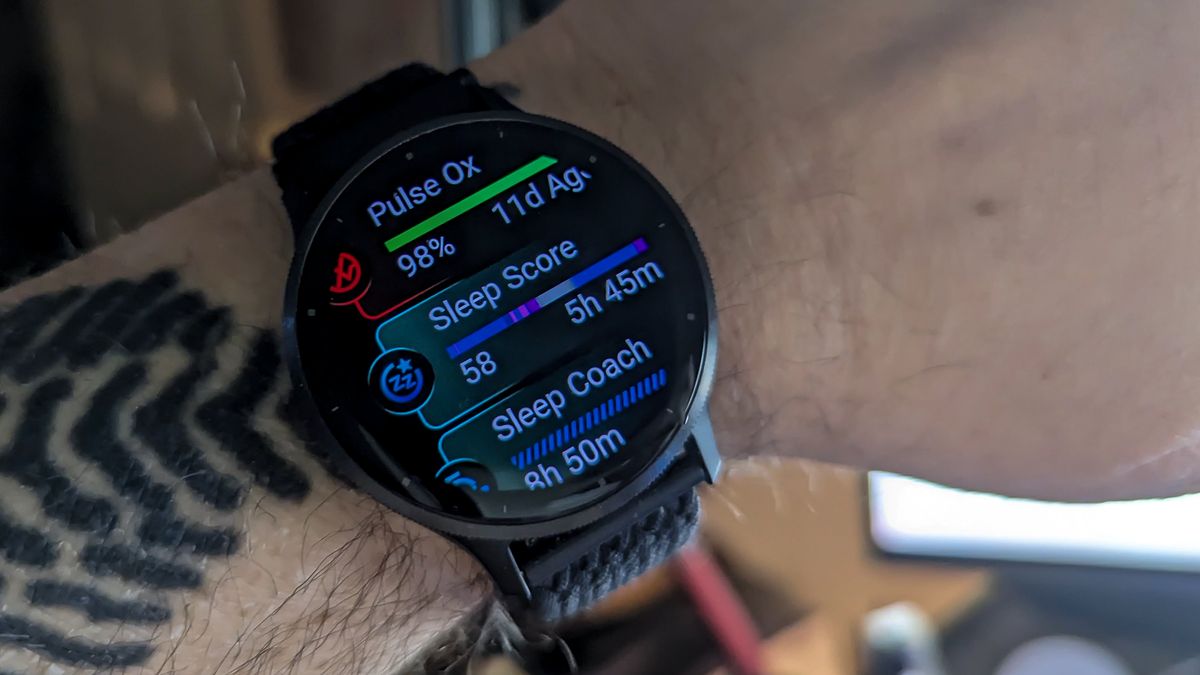Fitness
Why Wearables Are the Future of Fitness: 4 Key Reasons

30 Oct Why Wearables Are the Future of Fitness: 4 Key Reasons

Keeping up with the fitness sector isn’t as easy as it seems, especially when new trends and tech emerge daily. Fitness apps are on the rise, but how do you remain ahead of the competition and provide actual value to users?
Fitness buffs today want more than a workout logging tool. They want data-driven insights, tailored recommendations, and wearable integration. Ignoring these features could lead to your app being uninstalled, along with many others. So, fitness wearables aren’t merely devices; they’re integral parts of the app ecosystem. You’re setting a new standard by integrating your fitness app with wearables. To ensure that your fitness app is ready for the future, it is important to incorporate real-time data, user involvement, and personalized experiences. All this is made possible by smart wearables. Let’s look at why adopting wearables can completely transform your app development strategy.
Top Reasons Why Fitness Wearables are Future of Fitness
Reason 1: Data-Driven Fitness Is Transforming Workouts
Fitness wearables are transforming the way we approach workouts. It offers real-time data tailored to each person’s specific body conditions. These devices simplify fitness by letting users create and track plans based on their health and fitness goals. Wearables enable data-driven fitness, which improves targeting, effectiveness, and engagement.
How Data Personalization Is Shaping Fitness Goals
One of the main benefits of fitness wearables is their ability to customize workouts based on real-time body data. These devices track heart rate and sleep habits to help you understand how a particular workout affects your body. Imagine knowing when your body is in its optimal fat-burning zone or realizing that bad sleep is slowing your recovery after a workout. Fitness wearables make this possible.
For example, personalized data lets users develop workouts that meet their goals, such as losing weight, gaining muscle, or boosting endurance. Also, wearables reveal areas for improvement, such as activity and recovery times. This tailored approach uses real and actionable data rather than guesswork, making your fitness journey more productive. Ultimately, wearables are like having a personal trainer on your wrist, providing the data you need to reach your goals faster.
Real-Time Feedback for Better Motivation and Results
For dedicated fitness enthusiasts, fitness wearables’ real-time feedback can be game-changing. Consider finishing a workout and instantly knowing how many calories you burned, your heart rate at different stages, and how long you were in your ideal fat-burning process. This instant feedback helps you modify your routines and inspires you to push harder or pace yourself.
Real-time feedback affects more than numbers. You feel accomplished when you see results, making you more likely to stick to your fitness practice. For example, when your wearable notifies you that you’ve reached 10,000 steps or finished your workout challenges, it’s a simple but strong incentive that keeps you going.
Plus, you can also change your workout intensity, length, and recovery time based on your current performance with this constant stream of data. This knowledge empowers you to be focused and consistent in your fitness quest, motivating you.
Reason 2: AI and Machine Learning Are Revolutionizing Fitness Wearables
Machine learning and AI in fitness apps, particularly in wearables, are impactful. These cutting-edge technologies learn from data. Using the same information, they enable consumers to make better health decisions, detect difficulties, and customize workouts in real-time. This way, wearables become personal fitness coaches using AI and machine learning.
Predictive Insights for Proactive Health Management
AI-enabled wearables go beyond heart rate and step tracking. They are becoming proactive health management tools. AI can spot patterns in your data that humans may miss. Your wearable may notice that your heart rate frequently increases during specific times of the day or that your sleep quality needs to be fixed. These minor changes may indicate stress or illness. Based on these observations, your wearable may recommend resting, hydrating, or seeing a doctor. In case of fatigue, certain wearables warn of exhaustion or suggest pauses. Early detection lets you address a minor issue before it becomes a major health issue. Finally, AI makes your fitness wearable a powerful tool for long-term health, not simply daily workouts.
Adaptive Workouts for Personalized Progress
Fitness wearables can now predict your next move because of machine learning. Your training history, performance statistics, and health variables are used by machine learning algorithms to create personalized routines. For example, if you’re looking to improve your running pace, your wearable may suggest increasing distance or interval training to push you. This dynamic adjustment keeps your training plan exciting.
The wearable adjusts to your fitness level regardless of whether you’re a beginner or a pro. To keep you growing, it tracks and adjusts your routines. It may lower intensity for a few days if you’re not recuperating effectively following an exercise. On the other hand, it may push you harder if it finds you’re able to work out easily.
The benefit of machine learning is that it simplifies fitness progression. Your wearable adjusts your routine to keep it fresh, challenging, and aligned with your goals without you having to research or plan. Thus, it becomes a personal trainer that evolves with you to keep you on track.
Reason 3: Boost User Engagement Through Community and Gamification
Fitness wearables aren’t only for measuring steps or heart rate; they foster a sense of community and excitement. Fitness wearables motivate, engage, and hold users accountable with social challenges and gamification. This makes exercise more fun and interactive, just like playing games with friends.
Fitness Communities Foster Accountability and Competition
People don’t give enough credit to how fitness wearables connect us to fitness communities. These communities let users share goals, join group challenges, and compete with friends and strangers worldwide. This sense of connectedness promotes accountability. Skipping a workout or ignoring your fitness goals is difficult when others are watching or competing with you.
Wearables often offer leaderboards to compare you to others. Adding healthy competition can be a highly motivating aspect. Spotting their name on the leaderboard of a workout challenge or a global fitness event motivates users to push themselves to do better. Additionally, certain wearables let users post their accomplishments on social media. This helps them gain recognition from their wider network.
Also, this community participation keeps users consistent. This is no longer about personal ambitions but joining an inspiring movement. The feeling of belonging and competition within fitness communities holds members accountable and motivates them to achieve new goals.
Gamification Increases Engagement and Retention
The element of gamification has made wearables a fun way to exercise. Wearables appeal to people’s need for recognition and reward with milestones, badges, and awards. Users are rewarded for reaching milestones like jogging their longest distance, burning a specific number of calories, or sticking to their weekly fitness plan.
These game-like elements make fitness fun and engaging. Users are motivated by goals and prizes that make exercise interactive rather than focusing on the hard effort. Unlocking a badge or meeting a daily goal can seem like leveling up in a game. The best part? Daily prizes encourage consistency as users unlock new achievements and sustain streaks.
Gamification also keeps things fresh. Wearables offer new challenges, seasonal events, and surprises to keep users coming back for more. This method makes exercising exciting and engaging, enhancing long-term retention. Ultimately, gamification makes exercising entertaining and rewarding, making you want to keep playing.
Reason 4: Seamless Integration with Fitness Apps and Platforms
Smooth integration with fitness applications and platforms is a major benefit of fitness wearables. This tool lets users track all their health and fitness in one spot, making their overall well-being easier to understand. From syncing workouts to linking smart home gadgets, wearables link data with action.
Unified Health Tracking Across Devices and Apps
Fitness wearables integrate with different applications and devices, making health tracking easier than ever. Wearables track your steps, workouts, and nutrition in one place. Since everything is unified, you don’t need to switch apps to track your health. Many wearables integrate easily with MyFitnessPal, Strava, and Apple Health.
They also integrate with sleep-tracking applications, diet platforms, and mindfulness apps to provide customers with a fuller view of their health. Imagine waking up, checking your wearable, and seeing how well you slept, how many calories you burned yesterday, and what workout to do today.
This unified tracking approach gives users a complete fitness picture, which is invaluable. Users can now understand how sleep, nutrition, and fitness are mutually connected instead of focusing on individual variables. This makes it easier to identify patterns, set goals, and enhance well-being.
The Future of Multiplatform Connectivity
Connectivity is the future of fitness wearables. These technologies are swiftly integrating with smart homes, telemedicine, and virtual coaching, not just fitness apps. This next level of connectivity makes wearables more powerful and individualized.
Imagine your wearable synchronizing with your smart home system to change home gym lighting and temperature based on workout intensity. Or your wearable might automatically send your health data to your doctor via a telemedicine platform, offering them real-time fitness and health insights. This seamless communication makes health management easier and more functional.
Integrating wearables with fitness apps power-ups trainers to deliver tailored suggestions on form, progress, and recovery based on real-time data. This multi-platform strategy creates a smart, connected fitness ecosystem that adapts to your lifestyle and provides a more personalized, data-driven fitness experience beyond the workout. Thus, integration with various platforms will make fitness easier, more efficient, and more personalized as wearables evolve.
Conclusion
Fitness wearables are no longer just cool gadgets; they’re game-changers! They inspire you to work harder, track your progress well, and monitor your overall well-being. These devices have you covered, irrespective of whether you want to smash your step targets or learn about your heart’s performance during a workout. The future of fitness is about being smart, connected, and data-driven, and wearables enable it all. Best of all, consider using these tech marvels with a personalized fitness app. Collaborating with a fitness app development company can help you realize your full potential by facilitating the smooth and efficient integration of wearable technology. Ready to ride the fitness innovation wave? The future is wearable, and it is here to stay!
————————
The information on MedicalResearch.com is provided for educational purposes only, and is in no way intended to diagnose, cure, or treat any medical or other condition.
Some links are sponsored. Products and services are not tested, warranted or endorsed.
Always seek the advice of your physician or other qualified health and ask your doctor any questions you may have regarding a medical condition. In addition to all other limitations and disclaimers in this agreement, service provider and its third party providers disclaim any liability or loss in connection with the content provided on this website.
Last Updated on October 30, 2024 by Marie Benz MD FAAD
7








